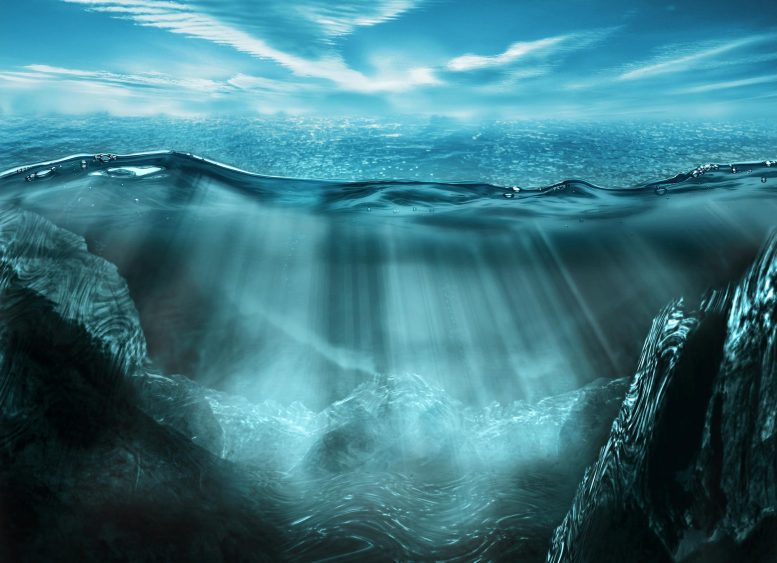
Over the next 80 years, climate change will have a significant impact on twelve economically and culturally important species that live in the California Current marine ecosystem.
Climate-induced changes threaten the future of coastal ecosystems.
It may come as no surprise to those who grew up watching Finding Nemo that the North American West Coast has its own version of the underwater ocean highway – the California Current marine ecosystem (CCME). The CCME stretches from California’s southernmost tip to Washington. Seasonal upward currents of cold, nutrient-rich water support a broader food chain that includes krill, squid, fish, seabirds, and marine mammals. Climate change, and associated changes in ocean pH, temperature, and oxygen levels, are, however, affecting the CCME – and not in a positive manner.
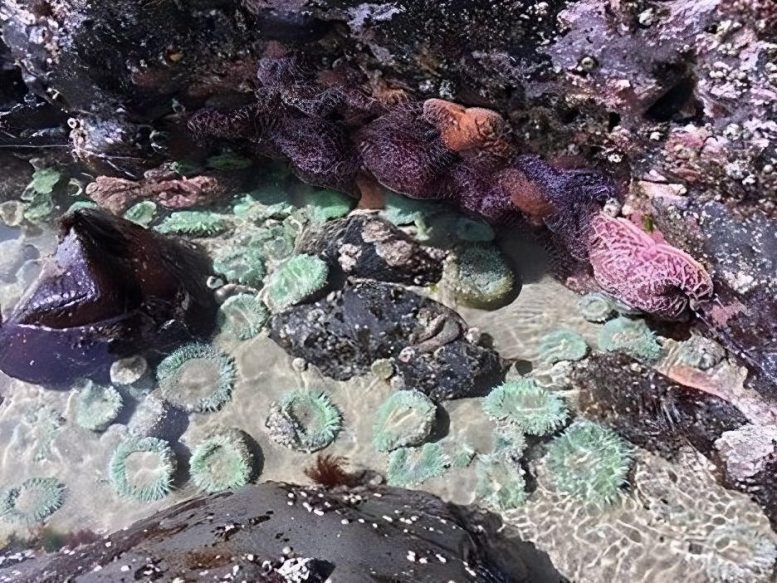
Ochre Star (Pisaster ochraceus) clutches onto to a rock face over a tide pool. Credit: Mike McDermid
Twelve economically and culturally significant species that live in the CCME will be significantly impacted by climate change over the next 80 years, according to new research led by Professor Terrie Klinger from the Washington Ocean Acidification Center within EarthLab at the University of Washington and Professor Jennifer Sunday, a professor of biology at McGill University. The largest reactions to shifting ocean conditions in this environment will be seen in the northern part of this region and regions that are closest to the coast. The area may anticipate a significant loss of the kelp that forms the region’s canopy, a drop in the survival rates of red urchins, Dungeness crab, and razor clams, as well as a loss of the aerobic habitat for anchovies and pink shrimp.
The impacts of changing climate are complex
Evaluating the biological consequences of many environmental factors at the same time demonstrates the complexity of climate sensitivity research. For instance, even while certain predicted environmental changes may improve metabolism, consumption, and growth, corresponding changes in other factors, or even the same ones, could potentially result in a fall in survival rates. It should be noted that physiological increases (such as in size, consumption, or motility) are not always advantageous, particularly when resources like food and oxygenated water are scarce.
Ocean acidification was linked to the highest declines in individual biological rates in some species, but the largest increases in others, of all the climatic impacts modeled. This finding highlights the necessity for continuous research and observation to provide accurate, actionable information.
Modeling is critical to safeguarding coastal ecosystems and the future of fisheries
Investing in predictive models and implementing adaptation strategies will be increasingly critical to safeguarding our ecosystems, coastal cultures, and livelihoods locally. Similar challenges will face species not addressed in this study, and responses will be complicated by the arrival of invasive species, disease outbreaks, and future changes in nutrient supply.
These species sensitivities will likely have socio-economic consequences felt up and down the West Coast, but they will likely not affect everyone and every place equally. Since the area is highly productive, supporting fisheries and livelihoods for tens of millions of West Coast residents, being able to predict changes at the population level for a range of species that are likely to be affected should shed light on potential economic impacts and optimal adaptive measures for the future.
“The time to accelerate science-based actions is now,” says Jennifer Sunday, an Assistant Professor in McGill’s Biology Department and the first author of the paper. She echoes the messages from the recent 2022 UN Ocean Conference and the associated WOAC side event. “Integrating scientific information, predictive models, and monitoring tools into local and regional decision-making can promote stewardship of marine resources and contribute to human wellbeing as we face inevitable changes in the marine life that sustains us.”
Reference: “Biological sensitivities to high-resolution climate change projections in the California current marine ecosystem” by Jennifer M. Sunday, Evan Howard, Samantha Siedlecki, Darren J. Pilcher, Curtis Deutsch, Parker MacCready, Jan Newton and Terrie Klinger, 28 July 2022, Global Change Biology.
DOI: 10.1111/gcb.16317

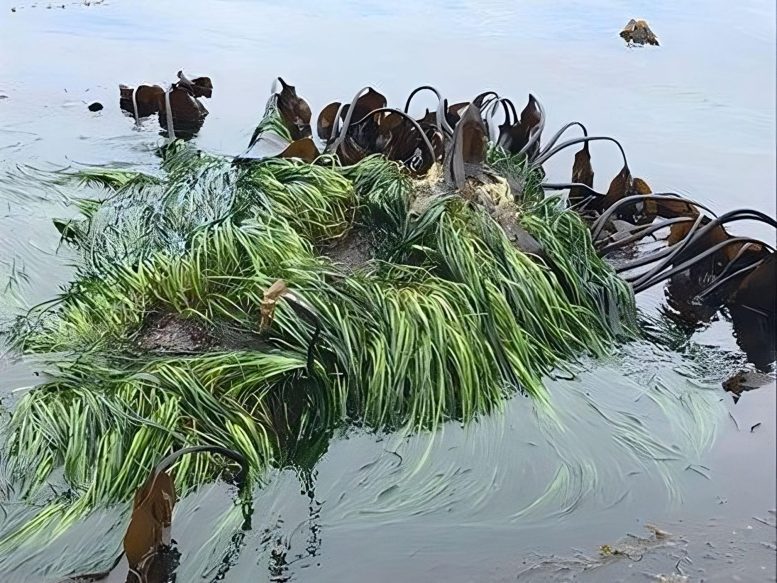
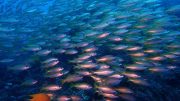
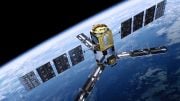


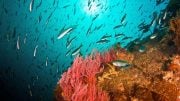
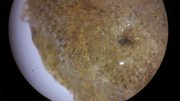
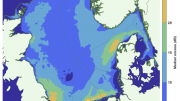
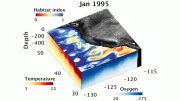
“Seasonal upward currents of cold, nutrient-rich water … Climate change, and associated changes in ocean pH, temperature, and oxygen levels, are, however, affecting the CCME – and not in a positive manner.”
It is those up-welling, nutrient-rich waters that are primarily responsible for the transient decreases in pH. It would be instructive to go to the Monterey Bay Aquarium website, where they track the minute-by-minute changes in the pH at the tank inlets, which sample water up-welling from the depths of the submarine Monterey Canyon. This is water that was last exposed to the surface air 800 years ago. Therefore, it is unaffected by the claimed recent Climate Change.
The quote above strongly implies that the seasonal changes only have a negative impact on sea life. The article then contradicts that by saying, “Ocean acidification [lowered pH, but still alkaline] was linked to the highest declines in individual biological rates in SOME species, but the largest increases in OTHERS, of all the climatic impacts modeled.” Those changes in pH are not a result of “climate change.” They are the result of detrital organic material raining down onto the abyssal plain and being oxidized into CO2 by bacteria. The very cold water has a greater capacity for dissolving CO2 than the relatively warm surface waters.
The different changes are probably the result of different organisms being optimized for the dominant pH environment they experienced when they first evolved. Like all organisms, they have a range of conditions they can tolerate, but thrive best at their optimum. Because climate is always changing, it should be expected that there will be consequent changes in the ratios of the various organisms. These aren’t negative changes, they are just changes like the boom and bust cycles of Arctic hare and fox.
More than models of dubious predictive ability, what is needed is better field observations and measurements to provide reliable data for modelers to work with.
I consider the term “Ocean Acidification” to be inappropriate and misleading:
http://wattsupwiththat.com/2015/09/15/are-the-oceans-becoming-more-acidic/
Changes in ocean pH, temperature, and oxygen levels are affecting? How to help species close to becoming fossils? Dig and make a series of increasingly sized hard walled pits connected to Sea water through sieves with gates. Try to help 1 or 2 animals in the smallest pit. If successful, try more of them in the next big pit. Release all of them from the biggest pit back into ocean. This is all that can be done for the present.